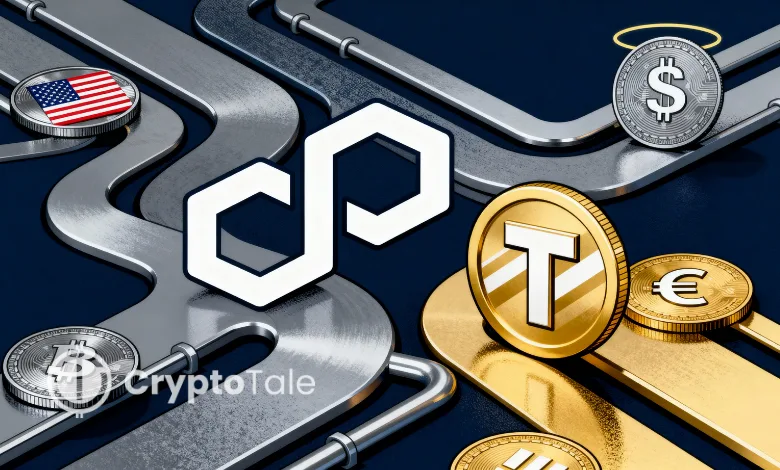Stablecoins To Hit 100,000 Issuers In Five Years, Says Polygon Exec

- Stablecoin issuers may exceed 100,000 in five years, marking a major shift in digital assets.
- Banks are expected to launch deposit tokens to combat capital moving to blockchain platforms.
- Future payment systems will use settlement layers for seamless token-to-token transactions.
Polygon executive Aishwary Gupta argues that stablecoins now sit at the centre of a reshaping global financial system. Speaking on 28 November, Polygon’s Global Head of Payments and RWA said stablecoins are entering a “super cycle” that could bring more than 100,000 issuers within five years.
Gupta links this expected growth to rising demand for digital dollars and other tokenised currencies. Users want assets that move quickly across borders while still tracking familiar national currencies.
He also framed the stablecoin surge as a contest for deposits between banks and on-chain platforms. As more issuers arrive, yields and incentives on digital assets could draw funds away from traditional accounts. He said banks that ignore this shift risk gradual erosion of their role in payments and credit.
Japan’s JPYC Pilots Show Stablecoins and Monetary Sovereignty
Gupta highlighted Japan as an early example of how governments can use stablecoins to reinforce economic sovereignty. In pilots, authorities and partners have used the yen-pegged stablecoin JPYC in trials for government bonds and policy stimulus.
These tests aim to show that a state can issue or supervise digital assets without ceding monetary control. Gupta argued that stablecoins function within existing monetary policy, instead of outside it. Central bank rate decisions still shape demand for the currency that backs each token.
He added that US dollar stablecoins respond to Federal Reserve policy in the same way as many bank instruments. In his view, this structure can strengthen a currency’s international reach by giving users in many markets direct access to tokenised dollars through a smartphone and internet connection.
Banks Turn to Deposit Tokens to Retain Liquidity
While Gupta sees policy advantages, he also expects disruption for commercial banks. Many banks depend on low-cost current and savings account deposits as a base for lending.
Higher yields on stablecoin platforms now compete for that same pool of money. He warned that as depositors move balances on-chain, banks lose cheap funding and face higher capital costs. This can limit the credit they extend to households and businesses.
Gupta expects banks to respond by issuing their own “deposit tokens.” These blockchain tokens represent customer deposits that stay on the bank’s balance sheet. Clients move and use the tokens on digital asset platforms while the underlying cash remains in traditional accounts.
In his example, a large institution such as JPMorgan could issue a token, such as JPMD, to qualified clients. A customer might transfer JPMD to a crypto exchange and trade other assets. They can later redeem the JPMD back into regular cash, ensuring the bank continues holding the original deposit throughout the process.
Related: Bolivia Stops Crypto Ban as Stablecoins Enter National Banks
Neutral Settlement Layers and Future Stablecoin Payments
Gupta said a surge to 100,000 or more stablecoins would create heavy fragmentation in digital payments. He believes neutral settlement layers will solve this problem by routing and converting between tokens in the background.
Under this model, a consumer could pay with a bank deposit token, and a merchant could receive a different stablecoin. The system would handle conversion and settlement across chains and issuers. It would work in a way similar to how today’s card networks manage messages between banks and merchants.
He suggested that as these rails mature, the specific stablecoin brand will matter less to end users. Regulators and institutions will instead focus on reserve quality, compliance, and interoperability. Central banks keep control of core monetary policy levers on which both stablecoins and deposit tokens depend.





